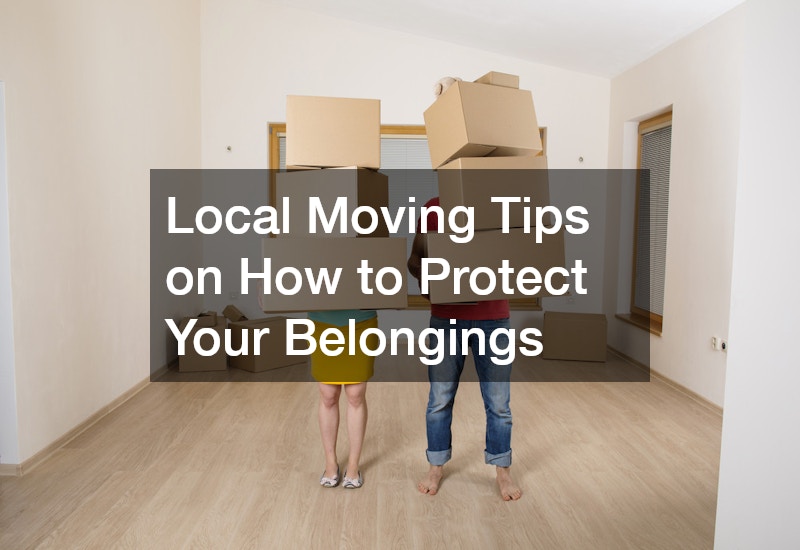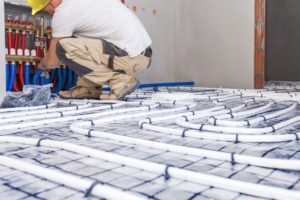When it comes to moving, proper planning and preparation are key to a successful and stress-free experience. Whether you are moving locally or long distance, there are certain steps you can take to ensure that your belongings are packed and transported safely. In this comprehensive guide, we will provide you with essential local moving tips to help you navigate the process smoothly and efficiently.
Create a Comprehensive Moving Inventory

Before you start packing, it is important to create a detailed inventory of all your belongings. This will not only help you keep track of your items but also ensure that nothing gets left behind during the move. Local moving tips suggest to make a list of all your possessions, categorize them by room, and label each box with its contents to make unpacking easier at your new location.
When hiring a local moving company, make sure to provide them with a copy of your inventory list so they can assess the size of the job and provide an accurate estimate. Having a comprehensive moving inventory will also help you decide which items to pack first and prioritize during the moving process. Consider using inventory management apps or software to streamline the process and keep a digital record of your items.
Some of the best moving companies offer inventory management services to help you keep track of your items throughout the move. Utilizing these services can provide you with peace of mind and ensure that your belongings are safely transported to your new home. This proactive approach can also assist in any potential claims for lost or damaged items, making your move smoother and less stressful.
Use Quality Packing Materials
Investing in high-quality packing materials is essential to protect your belongings during transit. Opt for sturdy boxes, bubble wrap, packing peanuts, and packing tape to secure your items and prevent damage. Full service packing and moving companies often provide packing materials as part of their services, making it easier for you to pack efficiently.
When packing fragile items such as glass and mirrors, make sure to wrap them in bubble wrap or packing paper and place them in a sturdy box. Label the box as fragile to alert movers to handle it with care. Using quality packing materials will help prevent breakage and ensure that your fragile items arrive safely at your new location. Additionally, consider using double-walled boxes for extra protection for more valuable or delicate items.
Local moving tips recommend utilizing industrial insulation blankets for protecting furniture and large items during the move. These blankets provide an extra layer of cushioning and protection, preventing scratches and dents during transport. Invest in quality blankets to safeguard your furniture and maintain its pristine condition, ensuring that your belongings are well-protected throughout the moving process.
Properly Pack Fragile Items
When packing fragile items such as glassware, dishes, and electronics, it is crucial to pack them carefully to prevent breakage. Wrap fragile items individually in bubble wrap or packing paper and cushion them with packing peanuts or shredded paper inside boxes. Secure the boxes with packing tape and label them as fragile to alert movers to handle them with care.
For mirrors, artwork, and other delicate items, local moving tips suggest using specialized mirror boxes or custom crates to provide additional protection during transit. Ensure that the items are well-secured inside the boxes to prevent shifting and breakage. Properly packing fragile items will help minimize the risk of damage and ensure that they arrive safely at your new home. Additionally, consider using corner protectors and padding to further safeguard these items from potential impacts.
When hiring a moving company, inquire about their expertise in handling fragile items and whether they offer additional insurance coverage for valuable possessions. Some moving companies specialize in fragile item packing and transportation to ensure the safe delivery of delicate items to their destination. This extra precaution can provide peace of mind and further protect your valuables during the move.
Label Boxes Clearly

Labeling boxes clearly is essential for an organized and efficient moving process. Use a permanent marker to write the contents of each box on the side, along with the room where it belongs. This will make unpacking easier at your new location and help movers place boxes in the correct rooms during the unloading process.
Local moving tips suggest that when labeling boxes, be specific and detailed to avoid confusion. Include a brief description of the items inside the box and mark any boxes containing fragile items prominently. Using color-coded labels or stickers for different rooms can also streamline the unpacking process and ensure that boxes are easily identifiable. Consider including the destination room and the box’s priority level, such as “Immediate” or “Non-Essential,” to help prioritize unpacking tasks.
Moving services recommend creating a master list of all labeled boxes and their contents to keep track of your belongings. Cross off each box as it is unloaded at your new home to ensure that everything has been accounted for. Properly labeling boxes will save you time and effort when unpacking and settling into your new space, ensuring a smooth transition and minimizing the risk of misplaced items.
Protect Furniture and Large Items
Protecting your furniture and large items during the move is essential to prevent damage and ensure their safe arrival at your new home. Use industrial insulation blankets to wrap and cushion furniture pieces such as sofas, tables, and chairs. Secure the blankets with packing tape to keep them in place and protect the surfaces from scratches and dents.
When disassembling furniture for the move, keep all hardware and components in a labeled bag or container to avoid losing them. Use furniture sliders or dollies to move heavy items safely and prevent strain or injury. For added protection, consider using stretch wrap to secure cushions, drawers, and other movable parts to prevent them from shifting or falling off during transit. Properly protecting your furniture and large items will help preserve their condition and longevity during the moving process.
Some moving companies offer furniture disassembly and reassembly services as part of their moving packages. If you have bulky or heavy items that require special handling, consider hiring local moving tips professionals to ensure that they are safely transported and reassembled at your new location. Protecting your furniture will give you peace of mind and make the moving process smoother, ensuring that your belongings arrive at your new home in the best possible condition.
Secure Electronics and Appliances
Protecting your electronics and appliances during the move is crucial to prevent damage and ensure they are in working condition at your new home. Use original packaging, if available, to secure and cushion electronic devices such as TVs, computers, and gaming consoles. If the original packaging is not available, wrap them in bubble wrap and place them in sturdy boxes with adequate padding.
For appliances such as refrigerators, washing machines, and dishwashers, disconnect them from power sources and secure any loose components. Use appliance repair service professionals to prepare appliances for the move and ensure that they are safely transported. Label boxes containing electronics and appliances as fragile to alert movers to handle them with care. Additionally, taking photos of the connections and setup before disconnection can help with reinstallation in your new home.
Local moving tips recommend securing electronics and appliances with straps or tie-downs during transit to prevent shifting and damage. Properly packing and securing your electronics and appliances will help prevent costly repairs or replacements and ensure that they are ready for use in your new home. By following these steps, you can protect your valuable devices and ensure a smooth transition to your new living space.
Utilize Proper Lifting Techniques

When moving heavy items or furniture, it is important to use proper lifting techniques to prevent injuries and strain. Bend your knees and keep your back straight when lifting heavy objects to distribute the weight evenly. Use your legs to lift, not your back, and avoid twisting your body while carrying items.
Consider enlisting the help of friends or family members to assist with lifting heavy items and furniture. Use furniture sliders or dollies to transport heavy items safely and reduce the strain on your body. Hiring local movers who are experienced in lifting and moving heavy items can also ensure a smooth and injury-free moving process.
Local moving tips recommend taking frequent breaks during the moving process to rest and hydrate. Listen to your body and avoid overexerting yourself to prevent injuries. Prioritizing proper lifting techniques will help protect your health and well-being during the move.
Hire Professional Movers or Use Reliable Rental Equipment
Deciding whether to hire professional movers or use rental equipment for your move depends on your budget and the complexity of the job. Local moving companies offer a range of services, from full-service packing and moving to labor-only options, to accommodate your specific needs. Consider hiring professional movers for a stress-free and efficient moving experience.
If you prefer a DIY approach, renting moving equipment such as trucks, dollies, and furniture pads can help you save money and customize your moving experience. Ensure that the rental equipment is in good condition and suitable for your belongings to prevent damage during transit. Local moving services can provide recommendations for reliable rental equipment providers in your area.
Before making a decision, research local moving tips on different moving options and obtain quotes from multiple companies or rental providers. Compare the services, prices, and reviews to choose the best option for your move. Whether you hire professional movers or opt for DIY moving, planning and preparation are key to a successful transition to your new home.
Protect Your Belongings During Transit
Protecting your belongings during transit is crucial to ensure that they arrive safely at your new home. Use sturdy boxes, packing materials, and padding to secure and cushion fragile items and prevent shifting during transportation. Consider investing in insurance coverage or valuation protection for valuable possessions to safeguard against loss or damage.
When loading the moving truck, place heavy items on the bottom and lighter items on top to prevent crushing and damage. Use straps or tie-downs to secure large items and furniture in place and prevent shifting. Utilize a storage container or moving pod for additional protection and security during transit.
Distance movers recommend local moving tips like checking on your belongings periodically during transit to ensure that everything is secure and in good condition. Make sure that fragile items are handled with care and that boxes are stacked and secured properly inside the truck. Protecting your belongings during transit will give you peace of mind and ensure a smooth move to your new home.
Inspect Items Upon Arrival

Upon arrival at your new home, take the time to inspect your belongings and ensure that everything has arrived safely and in good condition. Check each box and item against your inventory list to verify that nothing is missing or damaged during the move. If you notice any discrepancies or damage, document them and notify your moving company immediately.
Inspect furniture, appliances, and electronics for any signs of damage or malfunction. Test all electronic devices and appliances to ensure that they are in working order. If you encounter any issues, contact the moving company or appliance repair service professionals for assistance. Keep a record of any damages or discrepancies for insurance or reimbursement purposes.
Local moving tips recommend unpacking and organizing your belongings as soon as possible to prevent clutter and confusion. Start with essential items and gradually unpack and settle into your new home. Take your time to adjust to your new surroundings, and reach out to your moving company if you require any additional assistance or support.
Planning and executing a successful move requires careful consideration and preparation. By following these local moving tips, you can ensure that your belongings are packed, transported, and unpacked safely and efficiently. Whether you hire professional movers or opt for a DIY approach, prioritizing the protection of your belongings and utilizing proper moving techniques will help you navigate the process with ease. Remember to stay organized, communicate effectively with your moving company, and take the necessary steps to protect your possessions during transit. With the right planning and resources, you can enjoy a smooth and stress-free moving experience.




